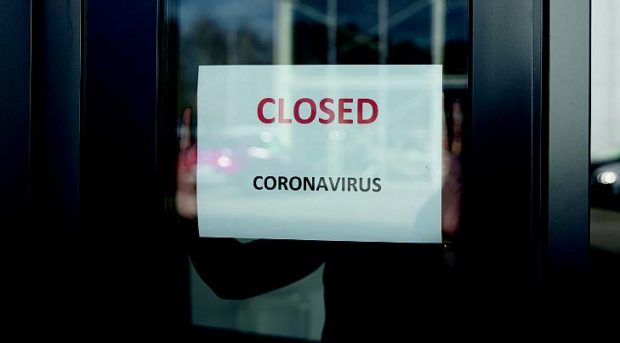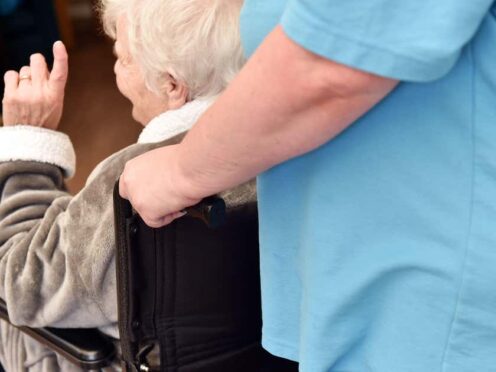There’s lots of information related to Covid-19 being released every week and it can be difficult to keep track, which is why getting advice from the people in the know is vital.
The team of employment experts at Brodies have put together this guide to the Coronavirus Job Retention Scheme and how it might apply to you.
(Please note, the information below is current as of April 21, 2020; Government guidance is changing regularly. Readers should consult the latest version of the Government guidance before taking any decisions.)
What is the Coronavirus Job Retention Scheme?
The Government’s Coronavirus Job Retention Scheme (the Scheme) has been set up to reimburse a proportion of the gross monthly wages of ‘furloughed’ workers. A ‘furloughed’ worker is an individual who has agreed in writing to stop all work for their employer due to circumstances arising as a result of COVID-19. The minimum length of time a worker can be furloughed for is three weeks.
The Scheme will operate from 1 March 2020 until the end of June 2020, but this may be extended by the Government.
Can all employers apply for reimbursement under the Coronavirus Job Retention Scheme?
Any UK employer (including businesses, charities, recruitment agencies (where agency workers are paid through PAYE) will be eligible under the Coronavirus Job Retention Scheme, provided that they had a PAYE scheme registered on HMRC’s information system by19 March 2020, have enrolled for PAYE online and have a UK bank account.
Although the Scheme is available to public sector organisations, it is not expected to be used by many as they’ll be continuing to provide essential public services or contributing to the response against the coronavirus outbreak.
Where employers (public sector or non-public sector) receive public funding for staff costs, and that funding is continuing, the Government expects them to use that money to continue to pay staff in the usual fashion – and not furlough them.
Who is covered by the Coronavirus Job Retention Scheme?
The Coronavirus Job Retention Scheme applies to individuals who are subject to Pay As You Earn (PAYE) on any type of contract including full-time, part time, agency, flexible and zero-hour contracts. Individuals can only be furloughed if they were on the employer’s PAYE payroll, and notified to HMRC via an information submission, by 19 March 2020 (rather than 28 February 2020, which was the date in the original Government guidance).
If a worker was made redundant or stopped working for their employer after 28 February 2020 but before 19 March 2020, an employer could re-employ them, put them on furlough and claim for their wages through the Scheme (unless they have moved to a new employer and are being furloughed by them).
As well as traditional employees, other people can be covered by the Scheme too if they are paid by PAYE. This includes office holders (including company directors); salaried members of LLPs; and workers.
Can an individual force their employer to furlough them?
There is no requirement for employers to use the Scheme. An individual could request to be furloughed, but their employer does not have to agree. However, if employers are furloughing some, but not all, staff, they should take care not to unlawfully discriminate when making these decisions.
Can self-employed people be furloughed?
The Coronavirus Job Retention Scheme does not cover those who are self-employed, and the Government has introduced a separate Self Employed Income Support Scheme.
There is pressure for the Government to look at the situation of those who provide services through a personal service company and whose principal income is via dividends. At the time of writing that dividend “income” cannot be claimed, although it is possible for any wages paid by the personal service company to be claimed if the individual is furloughed.
What about people on sick leave?
Employers should take specific advice if they plan to furlough someone who is currently on sick leave, or if someone becomes ill during a period of furlough, as the current HMRC guidance and ‘Treasury Direction’ are not entirely consistent.
Employers cannot reclaim statutory sick pay via the Job Retention Scheme. However, employers with less than 250 eligible employees may be able to claim reimbursement of up to two weeks’ statutory sick pay (SSP) per eligible employee who has been off work due to coronavirus.
What about people who are shielding?
Shielding is a measure to protect people who are clinically extremely vulnerable. The Government has issued guidance to identify those who have serious underlying health conditions and therefore should follow the shielding measures to keep themselves safe.
Those who are “shielding” in line with public health guidance can be placed on furlough if they are unable to work from home. The same applies to those who need to stay at home with another household member who is shielding.
What if someone has more than one employer?
An individual may have two jobs. If they have more than one employer, they can be furloughed for each job. Each job is separate and the cap which applies to reimbursement of wages applies to each employer individually. Someone could be furloughed from one job, and receive a furlough payment, but continue working for another employer – as long as there is no link or association between the two employers.
It is possible to start a new job when furloughed and receive additional income from a second job (provided the organisation is not linked or associated with the employer from whom the individual is furloughed). Some contracts also contain restrictions on working for other employers so this may have to be agreed first.
How much will be reimbursed under the Coronavirus Job Retention Scheme and what does it cover?
The Scheme will allow the employer to claim a grant to cover 80% of an employee’s ‘reference salary’, which is the amount payable to the employee in the latest salary period ending on or before 19 March 2020, up to a maximum of £2,500 per month, plus the associated employer national insurance contributions and the minimum auto-enrolment pension contributions on that subsidised wage.
Employers can also claim for any ‘regular payments you are obliged to pay your employees‘. This includes wages, past overtime, fees and compulsory commission payments; but excludes discretionary bonus, tips, discretionary commission payments and non-cash payments.
The reference salary should not include the cost of non-monetary benefits provided to employees including taxable benefits-in-kind, nor should it include benefits provided through salary sacrifice schemes (including pension contributions).
Income tax and national insurance contributions will be payable on the sums received under the Scheme.
Employers can also voluntarily top-up employees’ pay, so they continue to receive 100%.
How are wage costs calculated under the Coronavirus Job Retention Scheme for individuals whose pay varies?
There are some additional issues for those on zero hours contracts but generally, if the individual has been employed for 12 months or more, an employer could claim for the higher of 80% of the following (subject to the cap):
- The actual amount paid in the corresponding calendar period in the previous year; or
Average monthly earnings from the 2019 – 2020 tax year (up to the point furlough began). - If the individual has been employed for less than 12 months, an employer can claim for 80% of their average monthly earnings since they started work (subject to the cap).
How can an employer furlough someone?
The Treasury Direction published on 15 April states that employers need individual employees’ agreement in writing that they will ‘cease all work in relation to their employment‘. HMRC guidance suggests that the requirement for a specific response from the employee is not absolute. If the terms of the employment contract are changed then agreement is needed in most cases but given current circumstances, most workers will agree to this if the alternative is redundancy, unpaid leave or reduced hours.
Furlough agreements must be kept on file for five years.
If sufficient staff numbers are involved, it may be necessary to consider collective consultation processes to secure agreement to changes to terms of employment. Consultations with trade unions may also be needed, depending on arrangements at individual workplaces.
Employers then apply for a grant under the Coronavirus Job Retention Scheme via HMRC. On 20 April HMRC’s online portal for applications opened. HMRC has advised of a few days’ delay between applications and payments being made.
How can an employer select who should be furloughed?
In some circumstances, employers will furlough a whole group undertaking the same role within a business. However, if an employer has to decide which individuals to furlough, initially they can ask for volunteers (some people may offer to stay at home on 80% pay depending on their circumstances). If it is not possible to agree who will be furloughed, then an employer may select on the basis of fair and objective criteria, which will vary depending on circumstances.
Workers can also be furloughed multiple times i.e. they can be furloughed for three weeks, brought back to work and then re-furloughed for another three weeks. Therefore, some employers may rotate people on and off the Job Retention Scheme.
Can workers who are furloughed do any work for their employer at all?
No, the guidance says:
“You cannot ask your employee to do any work that:
- makes money for your organisation or any organisation linked or associated with your organisation
- provides services for your organisation or any organisation linked or associated with your organisation”
This means that workers who have agreed to work reduced hours, or for reduced pay, would not be eligible under the Job Retention Scheme.
How can employers help employees who need to take time off to look after their children?
There are various options. Employees are entitled to ‘time off for dependants’, which is unpaid, unless employers have a policy offering pay. It is usually intended for short periods of absence, but current circumstances are likely to justify a longer period.
Alternatively, employees can request parental leave if they meet certain conditions. In most cases, this entitles them to four weeks’ leave per child (under 18) in any year (provided they have not already reached the maximum of 18 weeks in total). This will be unpaid, unless the employer offers an enhanced parental leave scheme which includes a right to pay.
It would not usually be appropriate for an employee to work from home whilst also providing childcare – particularly with younger children who need constant attention. However, with schools and nurseries closed, employees may be keen to continue some work where possible, rather than take time off to cover the entire period of closure.
Some employers may consider flexible options, for example, can parents split childcare so both parents can work part-time? Is there an option for an employee to work outside of their normal working hours, when another parent is available to provide childcare? Employers should discuss alternative arrangements with employees, so both parties can plan effectively and ensure there is sufficient cover available. Thereafter, the employer should keep in touch with employees to assess how the new plans are working.
Employees who are unable to work because they have caring responsibilities ‘as a result of coronavirus’ can also be furloughed. Similarly, employees who have to look after children because of closed schools or nurseries could be furloughed if the employer agrees.
What is emergency volunteer leave and how does it work?
Emergency Volunteer Leave has been proposed by the Government. The right to this is not yet in force, but if introduced it will be unpaid leave, which a worker can take for a period of two, three, or four consecutive weeks within a set 16-week ‘volunteering period’, to volunteer in the NHS or other social care services.
To take the leave a worker will need to give 3 working days’ notice to their employer, prior to the start of their leave in the form of an Emergency Leave Certificate. This Certificate will be issued by an appropriate authority, certifying that the worker has been approved as an emergency volunteer.
Certain workers are excluded, including those who are employed by an undertaking with less than ten staff or some Crown, Parliamentary and National Assembly workers.










